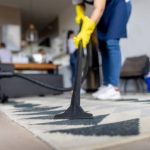Marble benchtops have a classic elegance with the luxurious feel on top, and many homeowners consider them for outdoor kitchens. Marble, in outdoor settings, indeed can be exposed to harsh weather conditions. Its porous nature allows moisture into the area where damage can occur. Elegant but often with necessary upkeep to look its best. Marble can be added in outdoor kitchen designs for such people who, from aesthetic perspective, take in the details. There are bounds though when it comes to stains and weather resistance; hence, everyone needs to weigh aesthetic appeal of their property against maintenance required.
How Marble Benchtops Are Crafted: From Quarry to Kitchen
The journey of marble from the quarry to your kitchen is long and very interesting. The first stage in the process is selecting the marble benchtops from quarries all over the world, such as the famous Carrara region of Italy. This marble is then taken out, cut into large blocks, and shipped to a processing plant. These are cut into thinner slabs and may be polished to highlight their natural beauty. Characterized by veins and patterns developed after millions of years, no two slabs are alike. The slab chosen by the homeowners is then precisely formed chopped and personalized to fit the kitchen area, the last stage being installation where accuracy and a perfect finish is guaranteed by skilled artisans.
Balancing Luxury with Sustainability
The process of making marble countertops could almost be considered fairly luxurious. Quarrying, for example, is a lengthy and energy-consuming exercise in sourcing marble. Quarrying can cause erosion of soil, habitat disruption and also significantly affect the landscape. There is also transportation cost added to the marble’s carbon footprint. Marble is recycled fully and then used sustainably since it is a resource that occurs naturally. It can last for years following its installation, hence giving lesser times of substitution. The environmentally sensitive house must source its marble from reliable dealers. Some companies are reducing their input on the environment and, concurrently, this aspect shows them to have preference to sustainable methods of quarrying. In addition they can provide locally sourced marble options that reduce the emissions that arise due to transport.
Marble is also a greener material for do-it-yourself projects because it usually requires fewer toxic chemicals in its production process than synthetic materials. Marble is very impactful on the environment but can be given a much longer life by choosing responsibly supplied materials and proper care. Balancing luxury and sustainability supports much more conscious decisions that help homeowners navigate their lives in an environmentally responsible way without giving up the flair.
Best Sealants for Marble Benchtops: How to Protect Your Investment
Probably one of the major problems with marble countertops is that they etch and stain. Sealers can protect your marble investment from damage. The right sealant forms a barrier across the porous surface and prevents wine, oils, etc. from penetrating through. Though other kinds of sealers are available, penetrating sealers are very commonly recommended for marble. These sealants penetrate the marble and leave protection that endures a long time, never stripping off the natural beauty. Sealants however, need to be reapplied after every six to twelve months depending on use for long-term protection. In addition to sealants are good maintenance practices.
Avoid using harsh chemicals and acidic cleaners as they can rip off the sealant. Avoid abrasive chemicals and acidic cleaners because they can dissolve away the sealant and even strip the finish off your marble. Opt for pH-neutral cleaning agents designed specifically for natural stone instead. Clean spills immediately to avoid discoloration. Cutting boards and trivets will ensure that heat damage and scratches don’t occur on your marble. You can greatly enhance the life-span of your marble benchtops with money spent on good-quality sealants. Follow the recommended maintenance practices.


